Theory of invention
One of the principles of inventive creativity is not to take a formulated problem for granted.
The real problem
If that is the case here, the real problem is not to detect a rise in battery voltage but rather whether the engine is running.
The idea
So you should be looking for something that appears when the engine starts to run. The simplest such thing is the alternator voltage.
The implementation
So your problem can be solved with the help of (only) a relay connected between the alternator output (after the rectifier) and ground.
Improvement
Idea. If you are going to use this "device" to automatically turn on the headlights, then you can add a logical AND with the position of the marker light switch so that when the marker lights are on, the relay will turn off the headlights.
Implementation. For this purpose, simply disconnect the coil of the relay from ground and connect it to the marker lights… i.e., connect the coil (as a "bridge") between the alternator and the marker lights.
Operation. Then only when the marker lights are off the relay will turn on. Why?
The clever trick here is that the circuit closes through the marker lights to ground. Another clever trick is that the logical AND function is implemented by the relay itself - only if both events (12 V on one side and 0 V on the other side of the coil) occur, the relay will turn on.
Another problem. But the relay is a bilateral device and would also be on when reverse voltage is applied (when the engine is not running and the market lights are on), which is undesirable when we park the car. Now the circuit is closed through a device that is connected to the output of the alternator (the signal lamp on the dashboard).
Solution. The ubiquitous diode, in series with the relay coil (with the cathode towards the marker lights), will still work.
A bit of history...
This idea came to me a long time ago when they introduced mandatory driving with lights on here. Then we installed hundreds of such "devices" in cars...
